2019年北师大版 高中英语必修2 Unit 6 Design lesson 3 Chinese Paper Art 课件(共43张)
文档属性
| 名称 | 2019年北师大版 高中英语必修2 Unit 6 Design lesson 3 Chinese Paper Art 课件(共43张) | 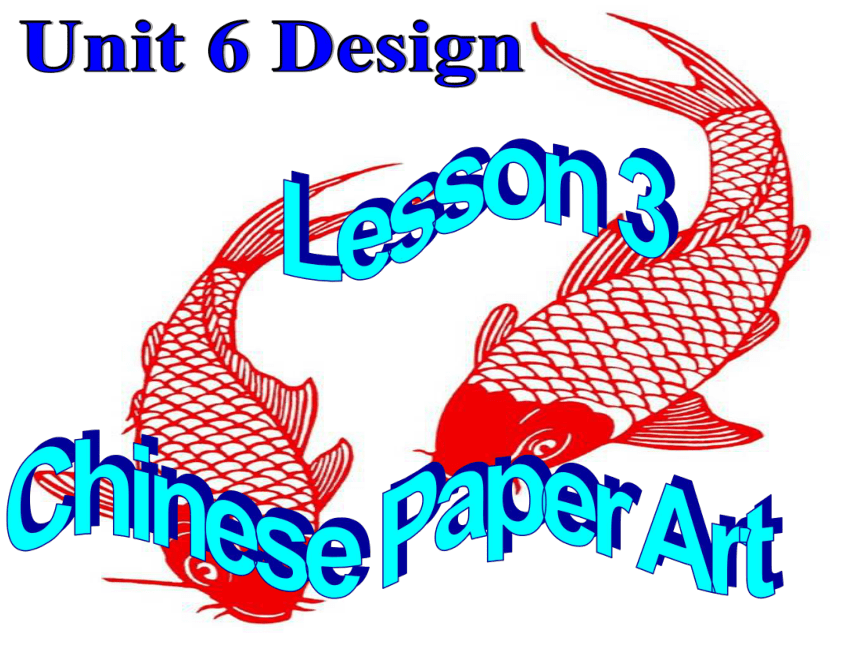 | |
| 格式 | zip | ||
| 文件大小 | 4.5MB | ||
| 资源类型 | 教案 | ||
| 版本资源 | 北师大版 | ||
| 科目 | 英语 | ||
| 更新时间 | 2019-04-14 09:29:23 | ||
图片预览


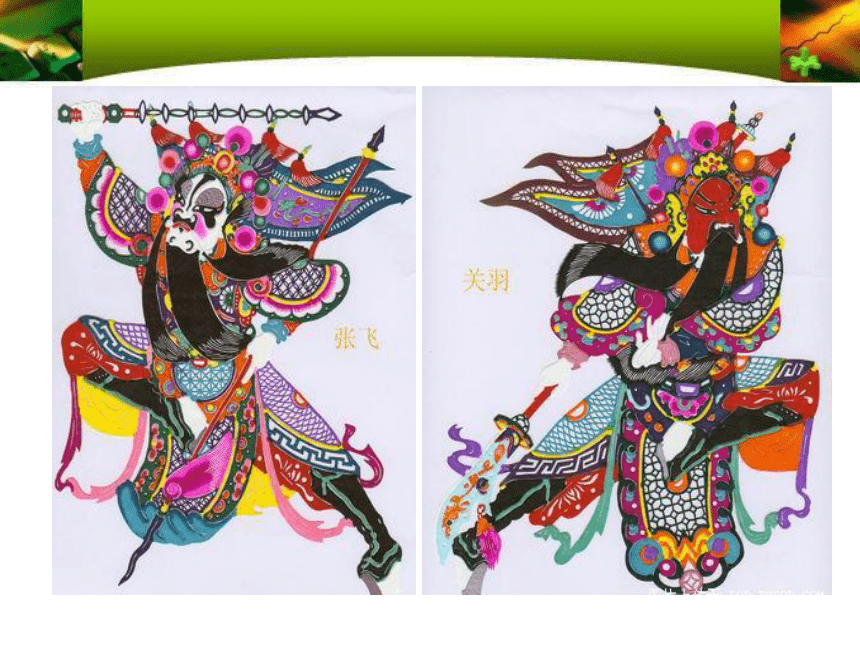
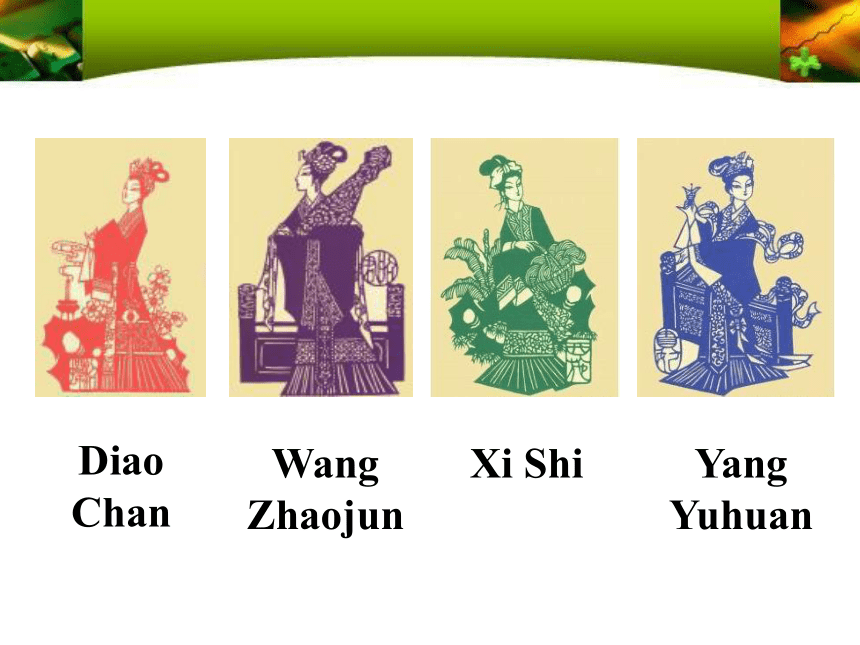
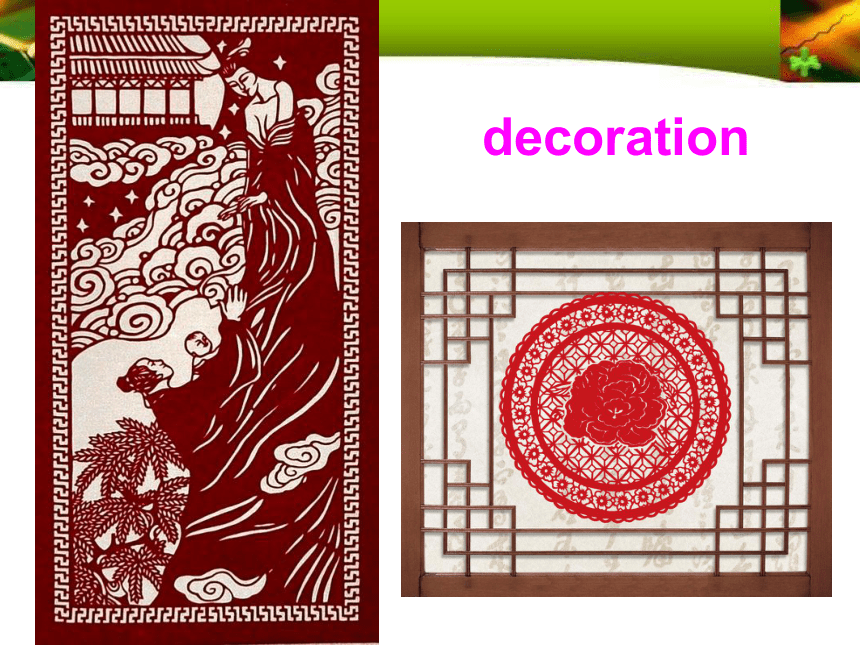
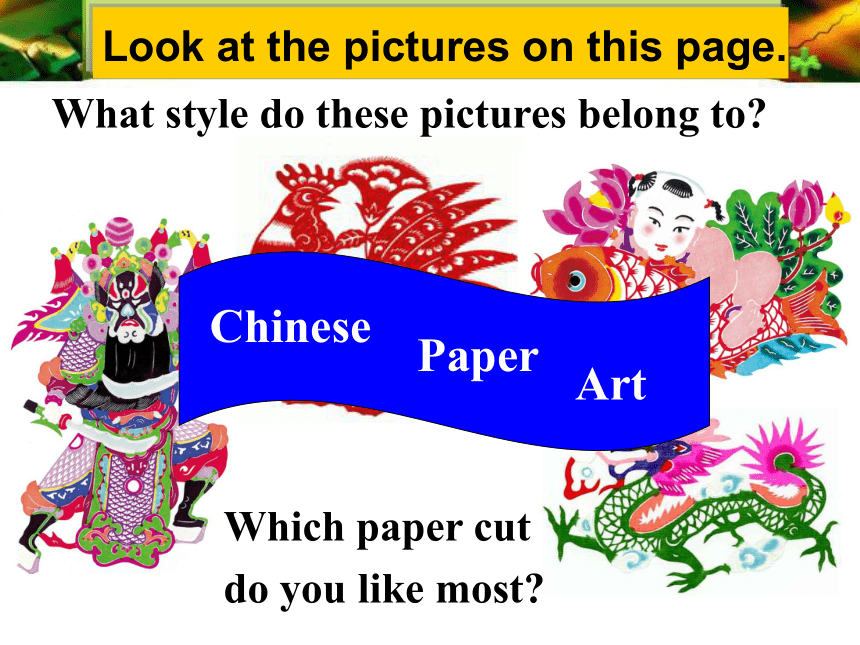
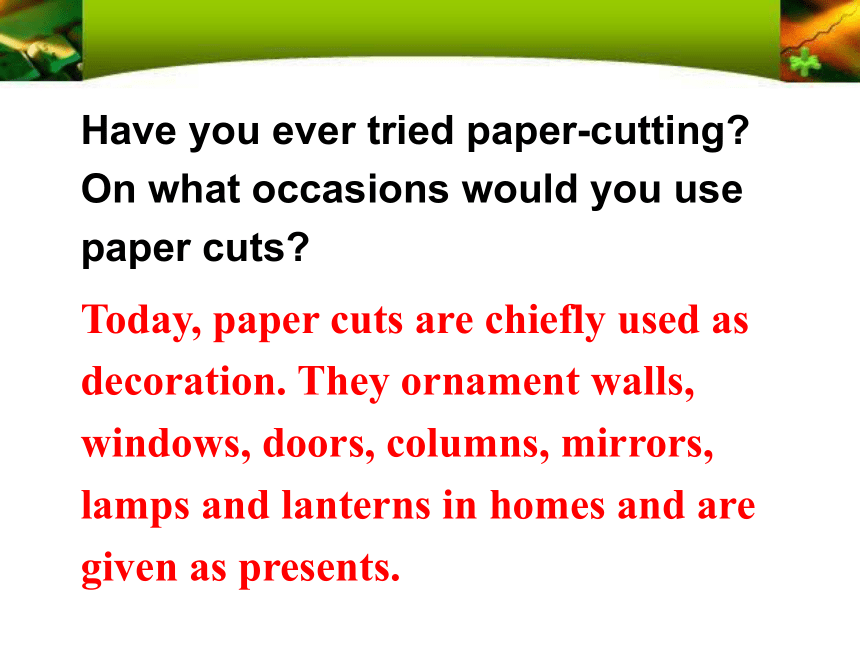
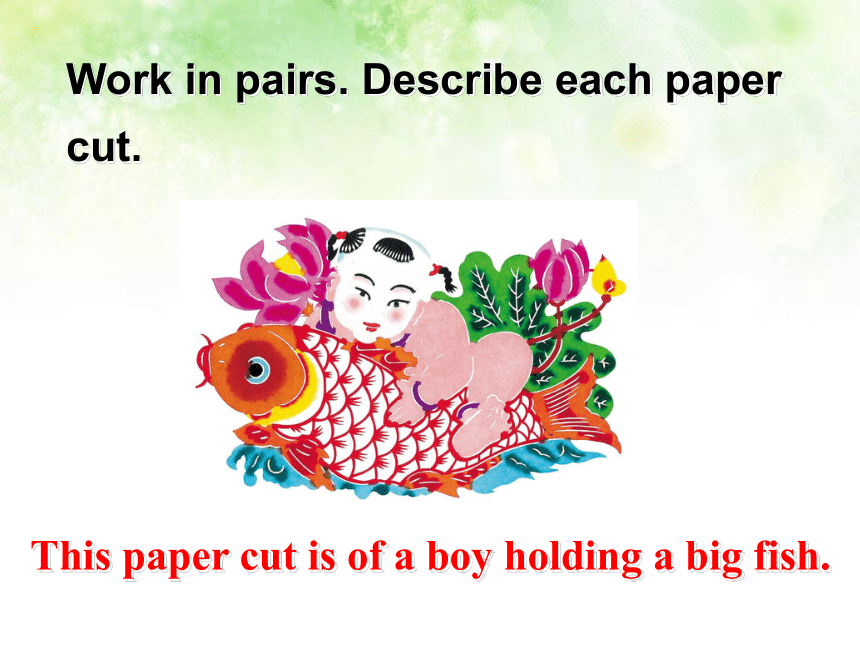
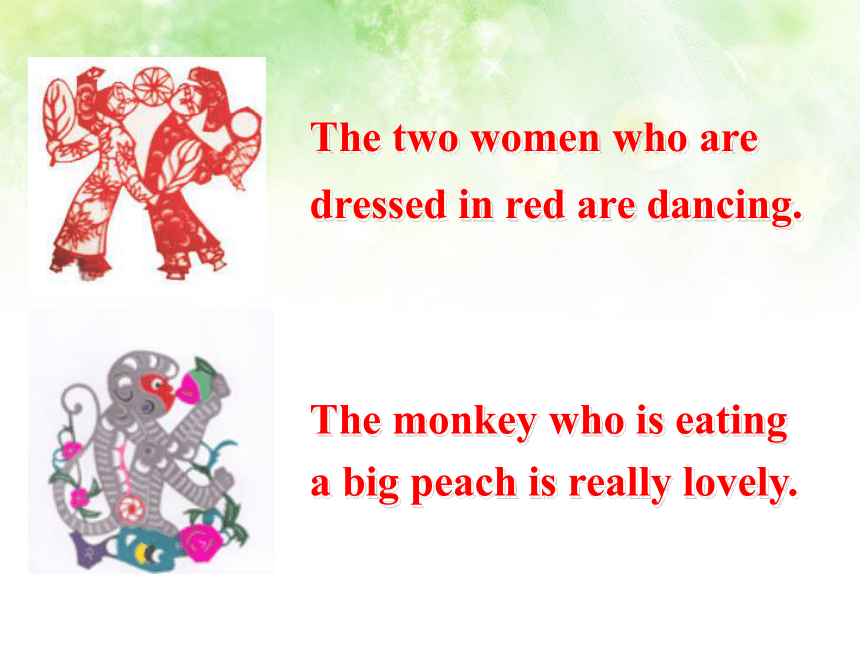
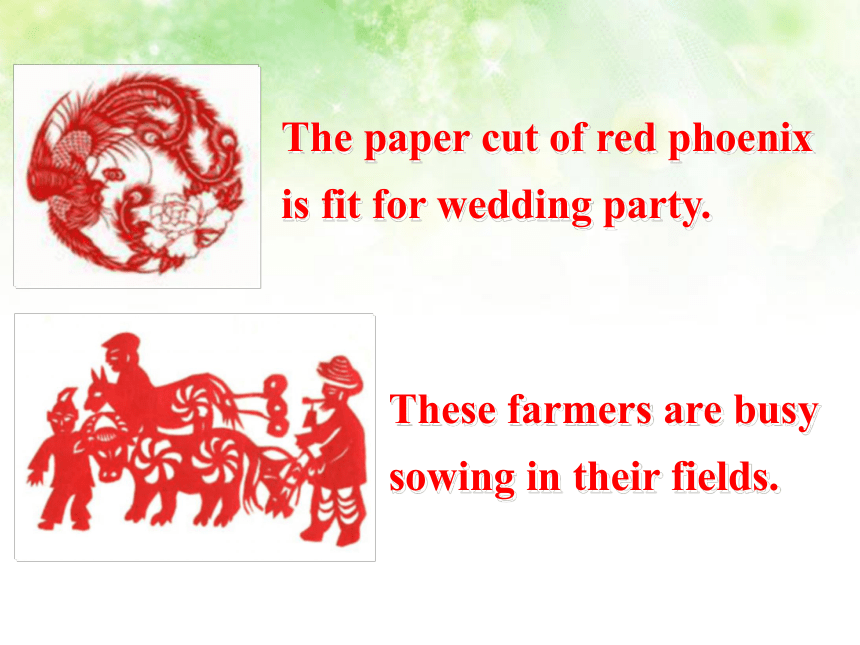
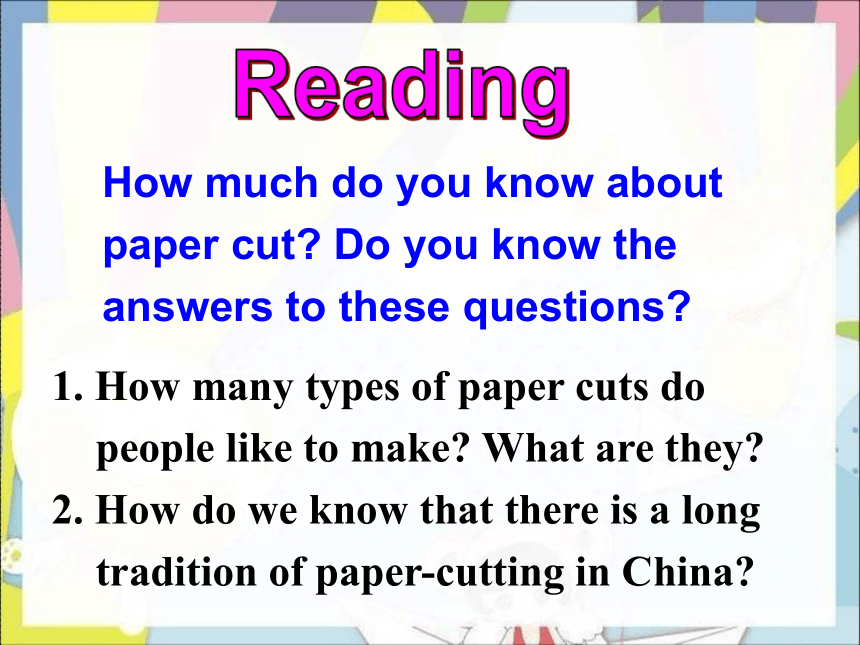
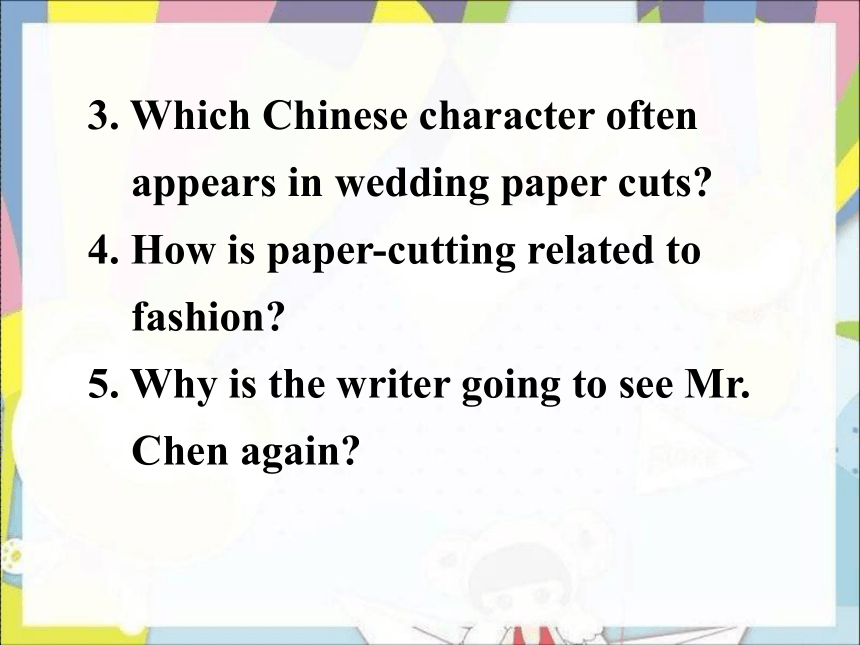
文档简介
课件43张PPT。 Lesson 3
Chinese Paper ArtUnit 6 DesignWarming upYang YuhuanXi ShiDiao ChanWang ZhaojundecorationLook at the pictures on this page. What style do these pictures belong to?Which paper cut do you like most?Have you ever tried paper-cutting? On what occasions would you use paper cuts?Today, paper cuts are chiefly used as decoration. They ornament walls, windows, doors, columns, mirrors, lamps and lanterns in homes and are given as presents. Work in pairs. Describe each paper cut.This paper cut is of a boy holding a big fish.The two women who are dressed in red are dancing.The monkey who is eating a big peach is really lovely.The paper cut of red phoenix is fit for wedding party.These farmers are busy sowing in their fields.1. How many types of paper cuts do people like to make? What are they?
2. How do we know that there is a long tradition of paper-cutting in China?How much do you know about paper cut? Do you know the answers to these questions?Reading3. Which Chinese character often appears in wedding paper cuts?
4. How is paper-cutting related to fashion?
5. Why is the writer going to see Mr. Chen again?Read the article and you will get the knowledge of paper cuts.1. How many types of paper cuts do people like to make? What are they?
Three. Paper-cuts are used for decorations, for religious purposes and for design patters.2. How do we know that there is a long tradition of paper-cutting in China?
We know that because paper cuts of animals have been found in tombs dating back to the time of the Northern and Southern Dynasty.3. Which Chinese character often appears in wedding paper cuts?
The Chinese character of double happiness often appears in wedding paper cuts.
4. How is paper-cutting related to fashion?
By using paper-cutting like a pattern on clothing or on a jewellery box.5. Why is the writer going to see Mr Chen again?
To learn paper cutting from him.What meaning can you get from these paper cuts?Voice your opinionPaper cuts with a long history is a special art form of China, and it plays an important part in people’s everyday life. 1. The writer wants to learn the skill of paper cuts.
2. Paper cut has something to do with clothing design.
3. Relations often use paper cuts to do something for the dead on special days.FTT4. The earliest paper cut dates back to the Southern Song Dynasty.
5. The text refers to us that paper cuts was once a necessary skill of a young woman.
6. Paper cuts are early found in tombs in the Northern and Southern Dynasty.
7. The text introduce the history and uses of Chinese paper cuts. TTTFdate back to 追溯到
e.g. The history of hockey can date back to thousands of years ago.
This custom dates back to the 17th
century.1. … which date back to the time of the Northern and Southern Dynasty!date from“始于……”, 强调from(从何时起) Language points2. …, for religious purposes and for design
patterns. purpose n. 目的, 意图
e.g. In summer, I usually stay at home for the purpose of protecting myself from the sun.
The main purpose of this concert is to raise money for the Project Hope.
What is your purpose in going abroad?他去北京是为了看他的教练。He went to Beijing for the purpose of seeing his coach. Translate the sentence using purpose. purpose 意为“目的, 意图”,为可数名词,有以下常用固定搭配:
for / with the purpose of
为了……目的
on purpose
故意, 有意地
(反义词是by accident随意地)aim, goal, purpose, object 均有“目标、目的”之意。
aim 从本义“靶子”引申而来,侧重比较具体而明确的目标,但常指短期目标。
goal 指经过考虑和选择,需经坚持不懈的努力奋斗才能达到的最终目标。
purpose 普通用词,既指以坚决、审慎的行动去达到的目的,又指心中渴望要实现的目标。
object 强调个人或需求而决定的目标、目的。3. I was also ready to try out paper-cutting for myself.
try out 试用, 试验, 试试
e.g. I’ll try it out and see whether it works.
我试试, 看它是否有效。
I was also ready to try out paper-
cutting for myself.
我还准备亲自尝试剪纸。[拓展]
try 构成的其他常用短语的含义及用法:
try for 设法得到
try on 试(衣帽等), 耍(滑头)
try one’s best 尽力 e.g. I don’t think I have a chance to get a
university scholarship, but it is
worth trying for.
Jane is trying on a new dress in the
fitting room.
John said that he would try his best
to catch up with other classmates.4. People to whom the dead person was related would make these offerings on special days and during festivals.
be related to 与…...有亲属关系, 同一类型, 物种。
e.g. Are you related to Margaret?
你与玛格丽特是一家人吗?The Zebra is related to the horse. 斑马和马是同一物种。Find these relative pronouns in the text:who, that, which, whose, whomWhich of them:
a) can refer to people?
b) can refer to things?
c) refers to possession?who, that, whom
that, which
whoseRelative Clauses (I)GrammarLook at these expressions from the text:1. a paper-cutting expert whom I interviewed
2. something that he learned
3. a young farmer who wanted a wife( )( )4. paper cuts which show the Chinese character
5. parents whose child has recently been born When can we leave out who, whom, that, which?
a) when it comes before a verb?
b) when it comes before a noun or
pronoun?b) when it comes before a noun or
pronoun?Grammar Summary 7, on page 93.Read the sentences below. Circle the relative pronouns and underline the relative clauses. Cross out the pronouns which can be left out.I loved the meal that we had last night.
The opera that we saw was terribly boring.( )( )3. I think the architect who designed the new building is very creative.
4. Have you bought the CD which I told you about?
5. He was a painter whose pictures were not well-known in his lifetime.( )Add relative clauses to complete the sentences.1. I enjoy watching films which … I enjoy watching films that …
2. I like meeting people who … I like meeting people whose …
3. I like visiting places that … I like visiting paces which …1. That’s the new machine ______ parts
are too small to be seen.
A. that B. which C. whose D. whatC高 考 链 接 2. I’ve become good friends with
several of the students in my school
_____ I met in the English speech
contest last year.
A. who B. where C. when D. which A3. The old town has narrow streets and
small houses _____ are built close to
each other.
A. they???????? B. where????????????? C. what????????? D. thatD4. The prize will go to the writer _______
story shows the most imagination.
A. that B. which C. whose D. whatC5. You’ll find taxis waiting at the bus
station ______ you can hire to reach
your host family.
A. which B. where C. when D. asAWork in groups and complete these sentences to make a questionnaire. Then work in pairs. Interview your partner using this questionnaire. Example: Do you like decorations that are
made out of paper?Language in Use Do you like decorations that ____?
Do you have friends who _______?
Do you study subjects that ______?
Do you have neighbors whose ___?
Do you listen to music which ____?Homework Finish the exercise 10 on page 41.
Chinese Paper ArtUnit 6 DesignWarming upYang YuhuanXi ShiDiao ChanWang ZhaojundecorationLook at the pictures on this page. What style do these pictures belong to?Which paper cut do you like most?Have you ever tried paper-cutting? On what occasions would you use paper cuts?Today, paper cuts are chiefly used as decoration. They ornament walls, windows, doors, columns, mirrors, lamps and lanterns in homes and are given as presents. Work in pairs. Describe each paper cut.This paper cut is of a boy holding a big fish.The two women who are dressed in red are dancing.The monkey who is eating a big peach is really lovely.The paper cut of red phoenix is fit for wedding party.These farmers are busy sowing in their fields.1. How many types of paper cuts do people like to make? What are they?
2. How do we know that there is a long tradition of paper-cutting in China?How much do you know about paper cut? Do you know the answers to these questions?Reading3. Which Chinese character often appears in wedding paper cuts?
4. How is paper-cutting related to fashion?
5. Why is the writer going to see Mr. Chen again?Read the article and you will get the knowledge of paper cuts.1. How many types of paper cuts do people like to make? What are they?
Three. Paper-cuts are used for decorations, for religious purposes and for design patters.2. How do we know that there is a long tradition of paper-cutting in China?
We know that because paper cuts of animals have been found in tombs dating back to the time of the Northern and Southern Dynasty.3. Which Chinese character often appears in wedding paper cuts?
The Chinese character of double happiness often appears in wedding paper cuts.
4. How is paper-cutting related to fashion?
By using paper-cutting like a pattern on clothing or on a jewellery box.5. Why is the writer going to see Mr Chen again?
To learn paper cutting from him.What meaning can you get from these paper cuts?Voice your opinionPaper cuts with a long history is a special art form of China, and it plays an important part in people’s everyday life. 1. The writer wants to learn the skill of paper cuts.
2. Paper cut has something to do with clothing design.
3. Relations often use paper cuts to do something for the dead on special days.FTT4. The earliest paper cut dates back to the Southern Song Dynasty.
5. The text refers to us that paper cuts was once a necessary skill of a young woman.
6. Paper cuts are early found in tombs in the Northern and Southern Dynasty.
7. The text introduce the history and uses of Chinese paper cuts. TTTFdate back to 追溯到
e.g. The history of hockey can date back to thousands of years ago.
This custom dates back to the 17th
century.1. … which date back to the time of the Northern and Southern Dynasty!date from“始于……”, 强调from(从何时起) Language points2. …, for religious purposes and for design
patterns. purpose n. 目的, 意图
e.g. In summer, I usually stay at home for the purpose of protecting myself from the sun.
The main purpose of this concert is to raise money for the Project Hope.
What is your purpose in going abroad?他去北京是为了看他的教练。He went to Beijing for the purpose of seeing his coach. Translate the sentence using purpose. purpose 意为“目的, 意图”,为可数名词,有以下常用固定搭配:
for / with the purpose of
为了……目的
on purpose
故意, 有意地
(反义词是by accident随意地)aim, goal, purpose, object 均有“目标、目的”之意。
aim 从本义“靶子”引申而来,侧重比较具体而明确的目标,但常指短期目标。
goal 指经过考虑和选择,需经坚持不懈的努力奋斗才能达到的最终目标。
purpose 普通用词,既指以坚决、审慎的行动去达到的目的,又指心中渴望要实现的目标。
object 强调个人或需求而决定的目标、目的。3. I was also ready to try out paper-cutting for myself.
try out 试用, 试验, 试试
e.g. I’ll try it out and see whether it works.
我试试, 看它是否有效。
I was also ready to try out paper-
cutting for myself.
我还准备亲自尝试剪纸。[拓展]
try 构成的其他常用短语的含义及用法:
try for 设法得到
try on 试(衣帽等), 耍(滑头)
try one’s best 尽力 e.g. I don’t think I have a chance to get a
university scholarship, but it is
worth trying for.
Jane is trying on a new dress in the
fitting room.
John said that he would try his best
to catch up with other classmates.4. People to whom the dead person was related would make these offerings on special days and during festivals.
be related to 与…...有亲属关系, 同一类型, 物种。
e.g. Are you related to Margaret?
你与玛格丽特是一家人吗?The Zebra is related to the horse. 斑马和马是同一物种。Find these relative pronouns in the text:who, that, which, whose, whomWhich of them:
a) can refer to people?
b) can refer to things?
c) refers to possession?who, that, whom
that, which
whoseRelative Clauses (I)GrammarLook at these expressions from the text:1. a paper-cutting expert whom I interviewed
2. something that he learned
3. a young farmer who wanted a wife( )( )4. paper cuts which show the Chinese character
5. parents whose child has recently been born When can we leave out who, whom, that, which?
a) when it comes before a verb?
b) when it comes before a noun or
pronoun?b) when it comes before a noun or
pronoun?Grammar Summary 7, on page 93.Read the sentences below. Circle the relative pronouns and underline the relative clauses. Cross out the pronouns which can be left out.I loved the meal that we had last night.
The opera that we saw was terribly boring.( )( )3. I think the architect who designed the new building is very creative.
4. Have you bought the CD which I told you about?
5. He was a painter whose pictures were not well-known in his lifetime.( )Add relative clauses to complete the sentences.1. I enjoy watching films which … I enjoy watching films that …
2. I like meeting people who … I like meeting people whose …
3. I like visiting places that … I like visiting paces which …1. That’s the new machine ______ parts
are too small to be seen.
A. that B. which C. whose D. whatC高 考 链 接 2. I’ve become good friends with
several of the students in my school
_____ I met in the English speech
contest last year.
A. who B. where C. when D. which A3. The old town has narrow streets and
small houses _____ are built close to
each other.
A. they???????? B. where????????????? C. what????????? D. thatD4. The prize will go to the writer _______
story shows the most imagination.
A. that B. which C. whose D. whatC5. You’ll find taxis waiting at the bus
station ______ you can hire to reach
your host family.
A. which B. where C. when D. asAWork in groups and complete these sentences to make a questionnaire. Then work in pairs. Interview your partner using this questionnaire. Example: Do you like decorations that are
made out of paper?Language in Use Do you like decorations that ____?
Do you have friends who _______?
Do you study subjects that ______?
Do you have neighbors whose ___?
Do you listen to music which ____?Homework Finish the exercise 10 on page 41.
